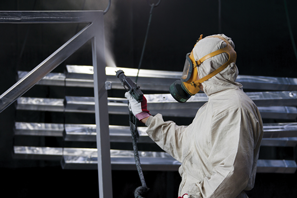['Hazardous Materials Safety - OSHA', 'Industrial Hygiene', 'Fire Protection and Prevention']
['Compressed Gases', 'Ventilation', 'Combustible Dusts']
08/20/2024
...
An air contaminant is any substance that is accidentally or unintentionally introduced into the air, having the effect of rendering the air toxic or harmful to some degree.
Scope
OSHA’s requirements protect employees from occupational exposure to air contaminants. The regulation applies to all workers who may be subjected to workplace air contaminants.
Regulatory citations
- 29 CFR 1926.55 — Gases, vapors, fumes, dusts, and mists.
- Table 1 to 1926.55 — Permissible Exposure Limits for Airborne Contaminants.
Key definitions
- Acceptable ceiling concentrations: The standard’s Table Z-2 sets acceptable ceiling concentrations for many substances. An employee’s exposure to these substances may not exceed at any time during an 8-hour shift the acceptable ceiling concentration limit given for the substance in the table.
- Dusts: Tiny particles that are dispersed into the air (i.e., silica, wood dust, etc.).
- Gases: Elements or compounds that are normally in the gaseous state at ambient temperatures and pressures (i.e., chlorine, carbon monoxide).
- Fumes: Tiny particles that become suspended in the air, especially during welding or cutting operations (i.e., zinc fumes).

- Milligrams per cubic meter (mg/m3): The weight of the contaminant (in milligrams) in one cubic meter of air.
- Millions of particles per cubic foot of air (Mppcf): A measurement used for mineral dusts. These exposure limit measurements are based on impinger samples counted by light-field techniques.
- Mists: Tiny droplets of a liquid that has been atomized and dispersed into the air (i.e., paint sprays).
- Parts per million (ppm): The number of equivalent parts of the contaminant per one million parts of air. For example, if the concentration of acetone is 50 ppm, there are 50 molecules of acetone per one million molecules of air.
- PELs, or Permissible Exposure Limits: The limits that establish the acceptable amount or concentration of a substance in the air in the workplace. They are intended to protect workers from adverse health effects related to hazardous chemical exposure.
- Vapors: Created when volatile liquids evaporate into the air (i.e., gasoline vapor).
Summary of requirements
Employers must:
- Determine the types and amounts of air contaminants in the workplace.
- Control sources of air contamination by using engineering controls, or, if necessary, by using personal protective equipment (PPE).
- Inform employees of what air contaminants are in the workplace and how they can protect themselves from them.
- Discuss any necessary PPE with workers and demonstrate proper use, cleaning, and storage of the equipment.
- Periodically test the air in the facility for the presence of air contaminants (as conditions warrant).
['Hazardous Materials Safety - OSHA', 'Industrial Hygiene', 'Fire Protection and Prevention']
['Compressed Gases', 'Ventilation', 'Combustible Dusts']
UPGRADE TO CONTINUE READING
Load More
J. J. Keller is the trusted source for DOT / Transportation, OSHA / Workplace Safety, Human Resources, Construction Safety and Hazmat / Hazardous Materials regulation compliance products and services. J. J. Keller helps you increase safety awareness, reduce risk, follow best practices, improve safety training, and stay current with changing regulations.
Copyright 2025 J. J. Keller & Associate, Inc. For re-use options please contact copyright@jjkeller.com or call 800-558-5011.
